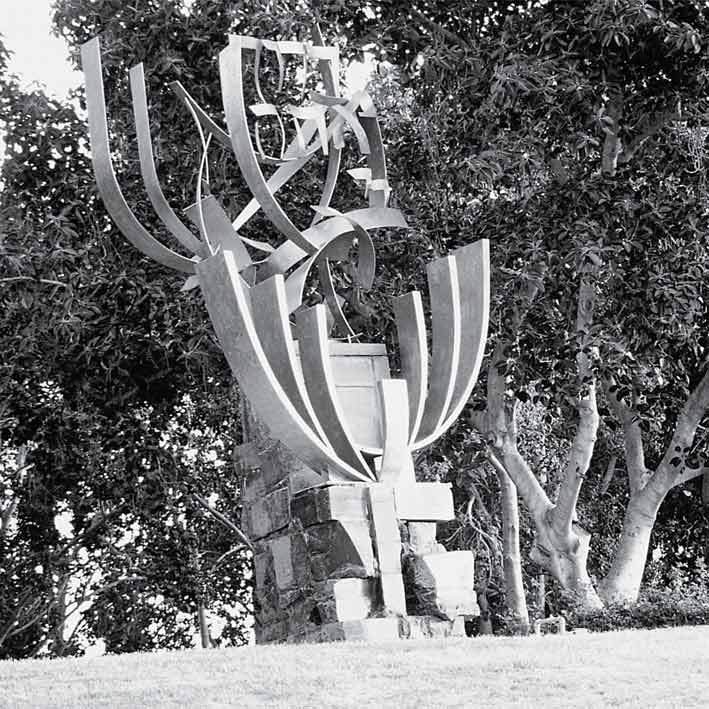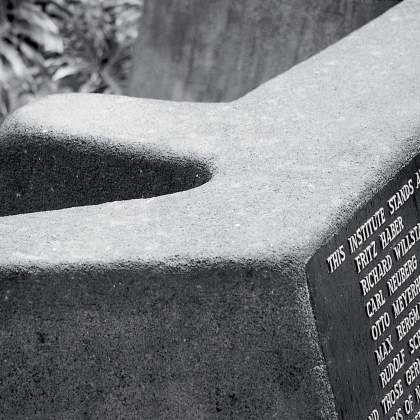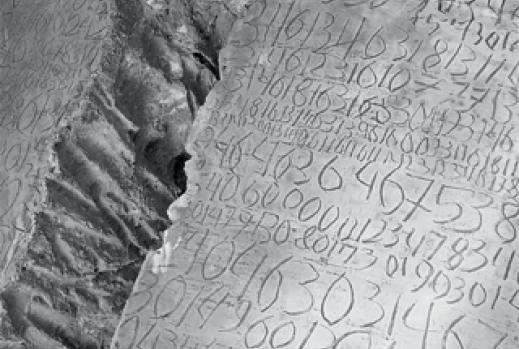Are you a journalist? Please sign up here for our press releases
Subscribe to our monthly newsletter:
Are you a journalist? Please sign up here for our press releases








Igael Tumarkin, born in Germany in 1933, immigrated to Israel as a two-year-old. He was a student of Rudi Lehmann in 1954, and in the following year studied and worked with Bertolt Brecht in the Berliner Ensemble in East Berlin. Renowned as a sculptor, painter, writer, intellectual and rebel, Tumarkin fought for a break from the lyrical abstract and is known for his groundbreaking use of new materials. He has represented Israel at the Venice Biennale and the São Paulo Biennale. His works are exhibited in various cities in Israel, Germany, France, Spain, the former Czechoslovakia, Japan and the United States.


Bruno Giorgi was born in Sao Paulo in 1905. In his youth he was arrested for participating in an anti-fascist movement. In the 1930s he had a studio in Paris, where he studied and worked with Aristide Maillol. In 1936 he joined the Spanish republican forces and took part in the Spanish Civil War. After Franco’s victory Giorgi returned to Brazil and devoted himself to sculpture. In the 1960s he created two large sculptural monuments of Carrara marble that were a milestone in the development and design of the city of Brasilia. Giorgi died in Rio de Janeiro in 1993.


Nathan Rapoport was born in Poland in 1911. He studied sculpture from age 16 in Warsaw. From 1936 he studied and worked in Italy and France, where he met Auguste Rodin, Aristide Maillol, and Jacques Lipchitz, and dedicated himself to creating monumental memorials like the 1948 Warsaw Ghetto Uprising Monument in Warsaw. Rapoport came to Israel in 1950 and created several well-known memorials, including the one to the leader of the Warsaw Ghetto Uprising in Yad Mordechai (1951) and the memorial to the fallen defenders of Kibbutz Negba (1953). Rapoport died in New York in 1987.


Shepard Herman, who contributed Swords into Plowshares to the Weizmann Institute of Science, was presented by then Institute President Prof. Albert Sabin with a scroll that read: “A sculpture entitled Swords into Plowshares created by Shepard Herman and dedicated by him to Mr. Harry Levine, was unveiled at the Weizmann Institute of Science. Let this scroll then attest that by presenting this sculpture to the Weizmann Institute, Mr. Herman has both added to the beauty of the campus and given expression to the profound desire of its staff that the pursuit of knowledge and the search for truth may lead to the achievement of peace in this ancient region and all over the world.”


Gidon Graetz was born in Tel Aviv in 1929. He grew up on Kibbutz Beit-Alpha and fought in the Palmach in battles over Jerusalem. He studied at the Florence Academy of Art and the Ecole des Beaux-Arts in Paris. Since 1965 Graetz has been living in Florence. Weizmann Institute Board member Ayala Zacks-Abramov is the artist’s aunt.


Hedva Ser, born in Petach Tikva in 1948, studied in Tel Aviv, Paris, and London. She has exhibited her works in important art museums in France, the United States, and Israel. Her artistic works can be found in the Knesset in Jerusalem, as well as in other collections. Ser lives in France.


Bernard Reder was born in Czernowitz (Austria, today Ukraine) in 1887. He studied at the Academy of Fine Arts in Prague, and worked and exhibited his sculptures together with Aristide Maillol in Paris. With the conquest of Europe by the Nazis he was forced to flee to Spain, and then went on to Portugal, Cuba, and the United States. His sculptures are on display in modern art museums in Paris, New York, and other cities. Reder died in New York in 1964.


Moshe Sternschuss was born in Poland in 1903 and immigrated to Israel in 1926. He studied at the Bezalel Academy of Art and Design in Jerusalem, then at the Ecole des Beaux-Arts in Paris. In 1948 he was among the founders of the New Horizons Group. He headed the sculpture department of the Avni Institute in Tel Aviv and was a senior lecturer on sculpture at the university of Haifa. His sculptures are exhibited in numerous public institutions in Israel, and in useums in Israel and abroad. Sternschuss died in Tel Aviv in 1992.


Dani Karavan was born in Tel Aviv in 1930. He studied art with Aharon Avni, Avigdor Stematsky, Yehezkel Streichman, and Marcel Janco. He continued his studies at the Bezalel Academy of Art and Design in Jerusalem with Mordechai Ardon, and at the Academy of Fine Arts in Florence. He has represented Israel at numerous international exhibitions, among them the Venice Biennale, the Kassel Documenta, and the Sדo Paulo Biennale, and has been named a UNESCO Artist for Peace. Karavan divides his time between Israel, France, and Italy.


Beverly Pepper was born in New York in 1924, studied at the Pratt Institute in New York City, and worked in Paris with Fernand Lיger and Andrי Lhote. At the outset she saw herself as a painter, switching to sculpture only in 1960. She has had numerous one-woman shows and has taken part in international exhibitions. Pepper started out making sculptures of wood, then moved to metal. Her art expresses a continuing struggle between mass and airiness, between rooted heaviness and soaring spirituality. In 1991 Pepper moved from the United States to Italy, where she lives today.


Menashe Kadishman was born in Tel Aviv in 1937. He studied with sculptor Moshe Sternschuss, worked as a shepherd on two kibbutzim, then resumed the study of sculpture with Rudi Lehmann and at the St. Martin’s School of Art and the Slade School in London. His works are exhibited in numerous museums in Israel and abroad and he has represented Israel at many international exhibitions, including the Venice Biennale, the Kassel Documenta, and the Sao Paulo Biennale. Kadishman lives in Tel Aviv.


Dina Recanati was born in Cairo in 1928. She studied in Egypt and England and specialized in art in the United States. She has exhibited her works in the United States, France, Israel, and Italy. Recanati lives in the United States and Israel.


Buky Schwartz was born in Jerusalem in 1932. He attended the Avni Institute in Tel Aviv, worked as an assistant to Itzhak Danziger, and went on to study at the St. Martin’s School of Art in London under Anthony Caro. In 1965 he was one of the founders of the Ten+ Group, which also included the sculptors Pinchas Eshet, Igael Tumarkin, Aika (Ariel) Brown, and others. In 1966 he represented Israel at the Venice Biennale, and in 1967 created the Pillar of Heroism at Yad Vashem. Since 1977 he has engaged in video art, and his work is considered a milestone in the development of this branch of the arts. Schwartz lives in Tel Aviv.

Ensemble is composed of four schematic, faceless human figures, viewed in profile, in a simple, laconic, dynamic silhouette. The four figures cling closely together and march forward, one of them stepping somewhat ahead of the others. The faceless figures, bursting forward in their abstract uniform shape, symbolize everyman’s yearning for progress and the creation of a better society. Marek Halter’s Ensemble is dedicated to the memory of Dr. Dov Biegun, one of the founders of the Weizmann Institute’s French committee. The sculpture was donated to the Weizmann Institute by Comitי France-Europe de L’Institut Weizmann des Sciences and the European Committee of the Weizmann Institute of Science.
Marek Halter was born in Poland in 1932. A Holocaust survivor, he became a prominent figure in French intellectual circles, combining international human rights activism with art. Known for many years as a painter, sculptor, and writer,he believes that the spiritual calling of Jews is to be a “Light unto the People” and to sound an alarm against evil. Halter lives in France.


Miriam Neuman was born in Mexico in 1932. She studied interior design, sculpture, and ceramics at the academy of art and with important artists in Mexico City. Her sculptures can be found in public parks in Mexico, the United States (San Diego), and Israel. She has presented her work at numerous exhibitions in Mexico and around the world. Neuman lives in Mexico City.

Memorial to the Victims of the Holocaust, made of bronze and stone, depicts a Torah scroll, split in half along its length and bathed in light. The scroll is tilted diagonally on a white stone cube, its central axis cut through. Some common names of Jews who perished in the Holocaust, as well as the numbers tattooed on their arms, are burnt and engraved on the body of the scroll. The scroll is perched on a stone base at a precarious angle, hovering between taking off and crashing. The sculpture is designed to incorporate fire and water, which trickles down the two inner sides of the stone, like tears. Encircling the base of the sculpture are the words of President Chaim Weizmann, in Yiddish, spoken at a Zionist Congress.
Dani Karavan was born in Tel Aviv in 1930. He studied art with Aharon Avni, Avigdor Stematsky, Yehezkel Streichman, and Marcel Janco. He continued his studies at the Bezalel Academy of Art and Design in Jerusalem with Mordechai Ardon, and at the Academy of Fine Arts in Florence. He has represented Israel at numerous international exhibitions, among them the Venice Biennale, the Kassel Documenta, and the Sדo Paulo Biennale, and has been named a UNESCO Artist for Peace. Karavan divides his time between Israel, France, and Italy.


Menashe Kadishman was born in Tel Aviv in 1937. He studied with sculptor Moshe Sternschuss, worked as a shepherd on two kibbutzim, then resumed the study of sculpture with Rudi Lehmann and at the St. Martin’s School of Art and the Slade School in London. His works are exhibited in numerous museums in Israel and abroad and he has represented Israel at many international exhibitions, including the Venice Biennale, the Kassel Documenta, and the Sao Paulo Biennale. Kadishman lived in Tel Aviv.

Medicinal Plants is a ceramic relief that looks like a forest floor strewn with wheat, leaves, and mandrake flowers, interwoven with verses from the Bible that describe medicinal plants. The relief is made up of large modular ceramic plates, each the size of a ceramics oven. They are painted in earth colors derived from the local landscape, with added shades of blue and turquoise.
Gedula Ogen was born in Jerusalem in 1929. She studied at the Bezalel Academy of Art and Design in Jerusalem with Mordechai Ardon. Later, she specialized in pottery with Hedwig Grossmann, one of the founders of ceramics in Israel.Between 1962 and 1980 Ogen served as head of the ceramics department at the Bezalel Academy. Her works are exhibited in museums and in various public institutions in Israel. Ogen lives in Jerusalem.
Our website uses cookies to enhance user experience by remembering your preferences and analyzing website traffic.
For more information about how we use cookies please read our











